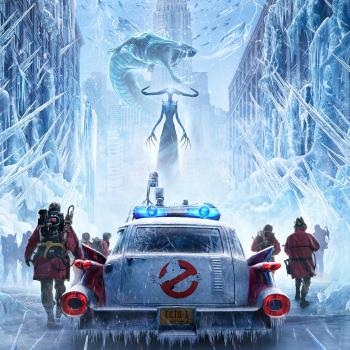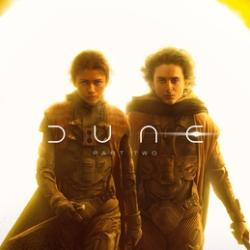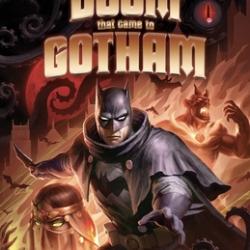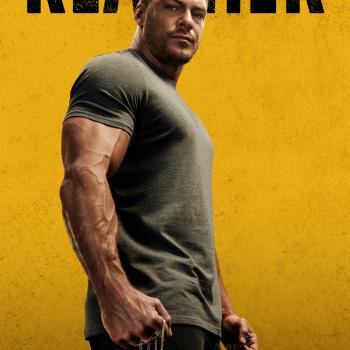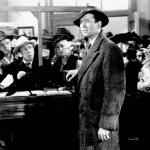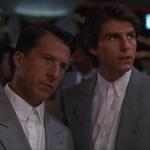Pacific Rim, directed by Guillermo del Toro
By Michael Hendrix
Pacific Rim opens up like a gathering storm, wasting little time in pitting the film’s ocean-born beasts against their robotic hunters. Over two hours later, you’re left with the sense of a movie richly infused with the joy of its creator. Helmed by Pan’s Labyrinth (2006) and Hellboy (2004) director Guillermo del Toro, Rim is an inspired and enthralling take on classic Japanese monster movies.
A portal has opened up at the bottom of the Pacific Ocean, from where massive beasts known as the “kaiju” (Japanese for “strange beast”) soon emerge. In reply, the world joins together to birth massive mechanical marionettes, or “Jaegers,” who can stand toe-to-toe with the kaiju. These skyscraper-sized mecha warriors are each helmed by two pilots mindmelded through a “neural bridge.” After five years of fighting the kaiju, the tables have turned and the sea monsters have gained the upper hand. Only a few Jaeger pilots remain and the world instead places its hope in massive sea walls (an allusion to the immigration debate?), which soon prove ineffective against the kaiju’s gathering strength. The movie takes off at this point as these last remaining fighters prepare for a final assault on the ocean portal to end the kaiju’s reign of terror.

Rim is anchored by Idris Elba’s gravitas and a humanity that bleeds through even as the world’s fate rests on his shoulders. Elba, best known as the business-minded drug lord “Stringer Bell” in HBO’s The Wire, plays the role of Stacker Pentecost, the commanding officer of the Pan Pacific Defense Corps charged with protecting humanity with his fleet of mecha warriors. Pentecost is flanked by Charlie Hunnam’s rogue hero Raleigh Becket who, as the washed-up co-pilot of the Jaeger “Gipsy Danger,” is faced with ever-increasing stakes in the battle against the rampaging sea monsters. Becket’s Jaeger co-pilot, Mako, is played by Rink Kikuchi with a feisty verve and a complicated backstory.
Del Toro does not use A-list actors in Rim, but that’s entirely the point. The monsters and robots are meant to be the stars of the movie. They in turn are consciously given distinctly human elements, all the way down to the Jaeger’s studied gait. Even the effects are given a life of their own, with the computerized “lens” frosting over as one robotic warrior begins to leave Earth’s atmosphere.
By making a monster movie like Pacific Rim, Guillermo del Toro has consciously picked up some of the more storied fanboy legends—and fills the screen time with insider references to them. The kaiju are mythical creatures that first romped through Japanese cinemas after World War II as metaphors of nuclear destruction. Famous kaiju like Godzilla and Mothra were well known for their propensity to wreak havoc in Japanese cities. The mecha were humanoid, robotic science fiction staples drawn from the same character pool as the kaiju. They each evoked a sense of being out of place, a feeling that fanboys and kids alike could relate to. These very same elements undergird the emotional attachment you (slowly) begin to feel to Pacific Rim.
Interestingly, this is the point at which del Toro deviates from legend, instead placing humanity as the outcasts to the monsters. We are “vermin” to be eradicated in the eyes of the kaiju, the movie soon explains, because of our wanton destruction of the earth’s environment. The only response to this threat of being out of place is to come together—humanity with humanity, melded into the Jaeger’s machine. “The deeper you bond, the better you fight,” as the movie’s hero Raleigh Becket explains.
As Christians, we can’t help but join del Toro in refusing to place our faith in machines for the salvation of mankind on the eve of its apocalypse. Neither can man alone achieve much more than death in this movie. Each fighter’s mind—and soon his or her affections—must be surrendered to another’s if there is to be any hope of surviving death. When faced with the ultimate choice of life or death, the greatest of the characters embrace an all-too rare sense of sacrifice on behalf of others. These are themes worth applauding.

More broadly, the movie asks a question that thoughtful Christians have wrestled with since at least the time of Augustine: How should we respond justly in times of war? This is especially interesting in light of del Toro’s professed pacifism and the kaiju’s original manifestation out of Japan’s destruction in the 1940s. War is painted as a profound tragedy in this movie, made right only in response to an even greater evil at hand. Characters consistently debate the right response to the kaiju’s terror, asking whether their actions are right and proportional. Del Toro also consciously chooses to give his military characters titles such as “marshal” and “ranger” to link them to Western traditions of just war and place their power within the state’s rightful authority. Even still, the characters continually express their desire for peace. War is never glorified in Pacific Rim. Augustine would have been proud.
For a movie built on immense battles, you’ll see surprisingly little death. Del Toro makes sure that the countless civilians housed in the cities under threat by the kaiju are seen being evacuated and placed far out of the beast’s path–a small touch left out of this summer’s other blockbusters, including Man of Steel and Star Trek Into Darkness. Human life is instead elevated and portrayed as dear. After one successful attack against the kaiju, Idris Elba’s character takes great pains to temper the crowd’s enthusiasm with the painful truth of those they’d lost (even when they’re minor characters in the grand arc of the film). He goes out of his way to protect those around him, ultimately at great consequence.
At the heart of del Toro’s film is the human heart. What Augustine called the “sacred seat of virtue” is seen as a fragile thing that grows cold absent another. The entire point of linking pilot’s together in the Jaeger’s is to show that two broken hearts can become one and whole again. The relationship between Becket and Mori is meant as a study—amidst the almost mind-numbing battles— of the process of opening one’s heart to trust and even to love. When we see this same dynamic in marriage, we know as Christians that it is a pale, beautiful reflection of what is ultimately realized for our very souls through Jesus Christ’s death on the cross. In Pacific Rim, a union of heart and mind can soon pick up oil tankers to beat down ravenous sea monsters. A stretch to match this to our faith, to be sure, but what remains in the mecha fighters at the end of the day is what’s lost on the enemy—a sense of right and wrong, born out through their behavior and decisions.

Pacific Rim enjoys every good thing a big studio budget can buy. Its epic set piece battles will blow you away. You’ll feel every CGI punch of the Jaegers, all washed in vibrant tones. Even the sound carries an operatic weight. Industrial Light & Magic is one of the real stars of the movie for its beautifully wrought visual effects, as is Guillermo Navarro for his cinematography. Every movie deserves to be made with the care with which del Toro made Pacific Rim.
A world built on technological wizardry needs a sturdy script to hold it up, otherwise it comes out as hollowed and lifeless as a Star Wars prequel. Unfortunately, Pacific Rim suffers from the same stilted dialogue of the sort familiar to many of those who’ve watched effects-heavy blockbusters. Except for Idris Elba, the actors rarely escape the script’s gravitational pull. This all means that there is sometimes very little that hits you on a truly emotional level.
Moreover, Pacific Rim seems also to have wasted far too much potential by showing us the kaiju monsters right at the beginning rather than toying with us. The J.J. Abrams-produced Cloverfield was able to fill every scene with a sense of dread at the unknown monsters tearing through New York City just off screen—right up until you saw the beast face-to-face. Rim could have used a hairy dose of that same tension.
Hollywood has given us several awful blockbusters in recent years, like Battleship—a loud, brainless flop that has studios cringing at mention of its name. Pacific Rim isn’t one of them. Rim boasts action that’s better executed and more gripping than any of the tepid fare that Battleship offered up, not to mention more humanity and thought than your average Transformers flick. Best of all, Rim isn’t even a sequel. It’s almost shocking to walk into the theater and experience an original storyline—though one that draws heavily on well-known legends. I’ve almost forgotten what a well-done action movie looks like that didn’t have Marvel or DC Comics behind it. In a world of superheroes, this movie has brought the monsters back to life—and it’s about time.



